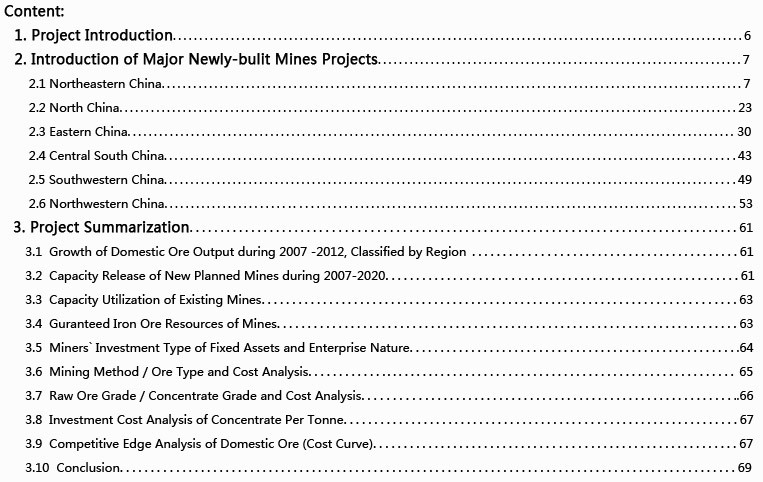Iron Ore Team
Post on: 16 Март, 2015 No Comment

Iron ore exports from Port Hedland see year-over-year growth
Wed Mar 11, 2015 04:42am GMT
Iron ore exports from Port Hedland, the worlds largest bulk exporting port, indicate the amount of iron ore that is leaving Australia for China and other destinations. Port Hedland Port Authority releases these figures each month.
Shipments through Port Hedland accounted for 55% of Australias total iron ore exports in 2013. More than 80% of the shipments from this port go to China. Rio Tinto (RIO ) ships iron ore out of Cape Lambert and Dampier.
Iron ore exports from Port Hedland totaled 36.7 million tons in January 2015, an increase of 8.5 million tons or 30% from January 2014 levels. BHP Billiton, Rio Tinto, and Fortescue Metals Group all showed increased production in their quarterly reports in January. Volumes from these players have led to a huge rise in exports from this terminal.
Month-over-month, exports fell 0.9% because Port Hedland and Dampier were closed on January 20 due to a cyclone warning.
Pilbara Port Authority, which now also includes Dampier. registered a total monthly throughput of 50.1 million tons, up 19.6% year-over-year. Dampier registered a throughput of 12.8 million tons, a decrease of 2% from January 2014.
China consumes two-thirds of seaborne iron ore. Therefore, any uptick or weakness in Chinese demand mostly impacts iron ore companies that conduct seaborne trade. These include Vale SA (VALE ) and Cliffs Natural Resources ( CLF ).
To take a broader approach toward investing in this sector, you can look at the SPDR S&P Metals and Mining ETF (XME ). CLF forms 3.6% of XMEs holdings.
Full article…
BHP, Rio Tinto say Chinese demand for iron ore not fading
Wed Mar 11, 2015 04:39am GMT
The worlds two largest mining companies, BHP Billiton and Rio Tinto. say they are convinced Chinas hunger for iron ore isnt about to fade, even as the price plumbed new lows after Beijings official acknowledgment last week that it is set for slower economic growth.
BHPs iron-ore president, Jimmy Wilson, said in an interview that the outlook for Chinas resource demand remained compelling, as the worlds second-largest economy expands from a larger base level.
He said demand for iron ore, a steelmaking ingredient, from Chinas manufacturing sector had been running above BHPs expectations in recent months, and the countrys cooling property market could also be set for an uptick.
I think we have to appreciate that China is getting bigger; they are targeting 7% [growth] and they are actually uncannily capable of delivering against those targets, Mr. Wilson said. We should never underestimate what is happening in China and what continues to happen in China.
His remarks echoed earlier comments from Rio Tintos iron-ore chief executive, Andrew Harding, who expressed optimism that Beijing can maneuver the Chinese economy into a new stage of growth during a speech in Perth on Tuesday.
China last week lowered its economic-growth forecast to about 7% for 2015. That compared with 7.4% growth last year, its lowest level in nearly a quarter-century. Leaders have dubbed it a new normal during the annual National Peoples Congress in Beijing.
Chinas more sober tone has rattled the global iron-ore market. At about $58 a ton, the spot iron-ore price is at its lowest since the Steel Index began publishing prices in 2008. Chinas iron-ore imports are down 0.9% year to date, according to the latest customs data.
Mr. Wilson said the sharp downturn in prices, which have halved in the past year, isnt drastically different from BHPs internal expectations.
Both BHP and Rio have been expanding operations in the Pilbara iron-ore mining hub of northwest Australia.
Rio Tinto, the worlds No. 2 iron-ore exporter, after Brazils Vale SA, is aiming to increase its ore shipments from Pilbara by nearly 30% within a few years. While BHP isnt investing so much in expansion, it expects to increase production from existing mines in the near term thanks to higher productivity.
The two companies have been criticized by competitors and some investors for maintaining their rapid output growth despite iron ores slide.
Rio Tintos Mr. Harding said Chinas steel production only needs to rise 1% a year, in line with its estimated growth last year, for the country to reach one billion tons of crude steel output around 2030.
China is currently the country demonstrating the most exciting growth in the developing world, Mr. Harding said.
Neither of the companies seems prepared to cut output to help boost iron-ore prices. Instead, they argue that producers with higher costs will have to cut supply first, a trend that should eventually put a floor under ore prices.
Rio Tinto has estimated 125 million tons of costly output, about 85 million tons from China, was closed last year. It estimated another 85 million tons could be cut in 2015, helping cushion the blow of another 100 million tons of higher supply from places such as Australia.
BHPs Mr. Wilson, who visits China at least once a year, said Chinas recent surprise interest-rate cut could aid iron-ore demand.
That would certainly put a bit more impetus into the housing market, he said, although he said it was still too early to assess the rate cuts impact.
Chinese Premier Li Keqiang has vowed to cut overcapacity in the steel industry and tackle pollution, more measures that traders worry will damp demand for iron ore.
But Mr. Wilson said such efforts werent affecting overall iron-ore demand, though they were making steel mills more eager for higher-quality ore.
Both BHP and Rio are cutting their own costs aggressively, though, to cushion the pullback in prices.
While BHP says the lions share of its job cuts have already been handled, Rio Tinto on Tuesday confirmed it likely has hundreds of layoffs ahead in its iron-ore division.
Full article…
Rio Tinto sees iron ore mines closing at slower pace in 2015

Wed Mar 11, 2015 04:38am GMT
Global miner Rio Tinto expects some 85 million tonnes of iron ore capacity to be taken out of the world market in 2015 because a price slump has made it too costly to produce, on top of an estimated 125 million tonnes last year.
Chinese mines — among the least efficient globally — will absorb most of the losses, according to Rio Tinto iron ore chief Andrew Harding. However, some of that will be offset by the likely start-up this year of the Roy Hill mine in Australia.
We estimate that around 85 million tonnes of existing production will exit the market in 2015, Harding said on the sidelines of a conference in Perth on Tuesday. This will come from China as well as seaborne suppliers.
The resistance of higher-cost Chinese miners to bowing out has been largely blamed by Rio Tinto and rivals BHP Billiton and Vale for the collapse in iron ore prices.
Analysts say the big miners have actively ramped up output to squeeze the smaller, higher-cost producers.
They say the amount of tonnage still to leave the market could rise by a further 50 million to 80 million tonnes as steel mills eschew lower-quality ore mined in such places as Iran, Malaysia and Mexico.
However, they warned that lost tonnage would be offset by new supply from the soon-to-be-completed Roy Hill mine in Australia.
The chief executive of Roy Hill, Barry Fitzgerald, is expected to tell the conference on Wednesday that the first shipments will come in September and eventually reach 55 million tonnes per year.
The forecast by Harding came as iron ore prices plumbed record lows due to a mounting supply glut that is colliding with weakening demand from Chinese steel mills.
Iron ore .IO62-CNI=SI slipped to $58 a tonne this week, the lowest since free-floating prices replaced an annual fixing system in 2009.
Citi forecast on Tuesday that the price would drop to around $50 a tonne in the short term as demand from Chinese steel mills waned. It forecast an average $58 over the year.
BHP iron ore head Jimmy Wilson estimated that about 250 million tonnes of Chinese iron ore was being produced annually out of total capacity to mine 420 million.
Chinas domestic industry is fragmented, with miners in coastal areas suffering under some of the highest production costs in the country, well above the price of imported ore from Australia and Brazil.
Ore from Chinas estimated 6,000 mines on average contains less than 30 percent iron, compared with Australian and Brazilian ores that typically have close to double that amount.
Many of the Chinese closures have occurred in Hebei Province, which accounted for 37 percent of Chinese output in 2014, according to Laura Brooks, an analyst with commodities consultants CRU.
Full article…














